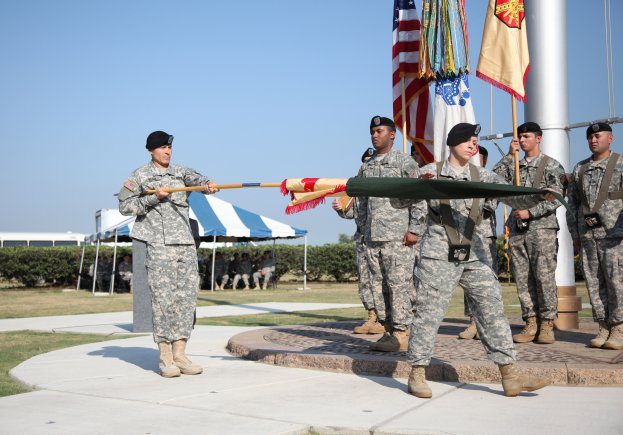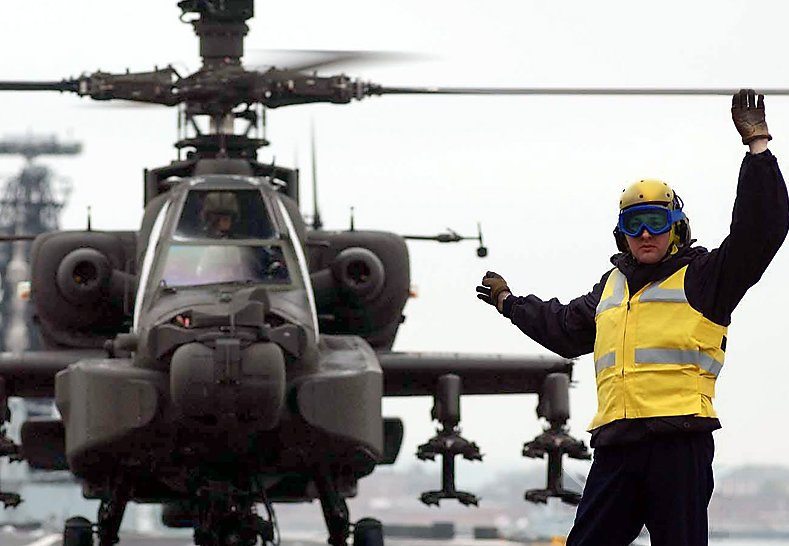Lt. Gen. Rick Lynch, commanding general of the Installation Management Command, presided over a ceremony marking the integration of the Army’s Family and Morale, Welfare and Recreation Command into the Installation Management Command.
The ceremony on the Fort Sam Houston, Texas, parade field completed the Family and Morale, Welfare and Recreation Command’s Base Realignment and Closure law-mandated move from Alexandria, Va., to Texas.
Immediately after the FMWRC command colors were uncased and presented, they were retired during a deactivation ceremony that formally made Army Family and MWR programs part of IMCOM and marked the creation of a Family and MWR Programs (G9) Division.
The mission of the newly established G9 is to serve the needs and interests of each individual in the Army community for the duration of their association with the military. Family and MWR programs are proof of the Army’s commitment to support and care for all who defend the nation and their family members.
“At garrisons around the world, family and MWR services and programs provide a source of balance for the men and women in uniform by fostering an environment where Soldiers and families can thrive,” said Maj. Gen. Reuben Jones, former FMWRC commanding general.
“Soldiers and families know that the Army cares and they see the tangible evidence of that support each and every day as they link with Army assistance and support services,” he said.
“As we integrate into the Installation Management Command, we will remain steadfast in our commitment to Soldiers and families,” Jones said. “We will never forget that the long-term strength of our all-volunteer Army depends on the well-being of Soldiers and their families.”
Precursor MWR programs began around the start of the 20th century. In 1903, Congress authorized the Army to build, operate and maintain PXs, libraries, schools, recreation centers and gymnasiums for the troops. By the mid-1940s, Special Services was created to oversee the rapidly expanding programs.
By the end of World War II, Recreation Services, the Army Exchange and the Soldier Show were all part of MWR. Family programs, however, remained few. During the 1960s and ’70s, a few programs were created for families, but it wasn’t until 1983 that the Army experienced a culture change regarding families.
“We played an important role in the development of modern Army life,” said Jones, now the deputy commander for operations for the Installation Management Command.
“We’ve come a long way from the mentality of ‘If the Army wanted you to have a family, it would have issued you one,’ to the first Army Family Symposium in 1981,” he said, “and the publication in 1983 of the Army Family’s White Paper by then Army Chief of Staff Gen. John A. Wickham Jr., which truly revolutionized the Army’s thinking. The Army recognized the integral support role of the Soldiers’ families.”
Wickham’s white paper led to the creation of the Community and Family Support Center on Nov. 23, 1984. More emphasis was placed on supporting Soldiers’ families when the organization was renamed the Family and Morale, Welfare and Recreation Command on Oct. 24, 2006.
“In the 27 years since CFSC — now FMWRC — came into existence, what a dramatic shift in how family and MWR programs operate on the garrisons and what services they provide,” Jones said. “Through all of the name changes, the mission of family and MWR has remained constant.”
Lynch expressed the importance of MWR to the nearly 200 Soldiers, family members, employees and friends attending the ceremony.
“You all, the employees of FMWRC, look in the mirror and the reflection back is somebody who sacrifices themselves for the greater good and makes an impact on the lives of the people that serve our nation in uniform and their families and great civilians every day,” Lynch said.
“So we are where we are based on what you’ve done, and you should be very proud of that,” he continued. “You should know that what you do is as important as what the Soldiers on the field of battle do today, because you’re back here taking care of their families.”
Lynch assured the audience that FMWRC’s deactivation would not negatively affect MWR programs and services.
“The merger of these two commands has nothing to do with efficiencies,” he said. “It has everything to do with effectiveness. The great efforts that we’re doing at Headquarters IMCOM, now merged with FMWRC, amplified the activities that take place at the garrison level so we can do even a better job taking care of our Soldiers, our civilians, and their families.
“We’re going to increase the output, but we’re going to do it in a more effective manner. We’re going to take all this to the very next level. I could not be more encouraged and I could not be more optimistic.”
Jones agreed.
“I’m a believer that change is change and that better certainly is better,” said Jones, who compared MWR’s evolution to that of music recorded on 8-track tapes, cassettes, CDs and MP-3 players. “Is this organization going to be better? You betcha.”
“Hey, the next level is here,” he said. “Better is here.”











